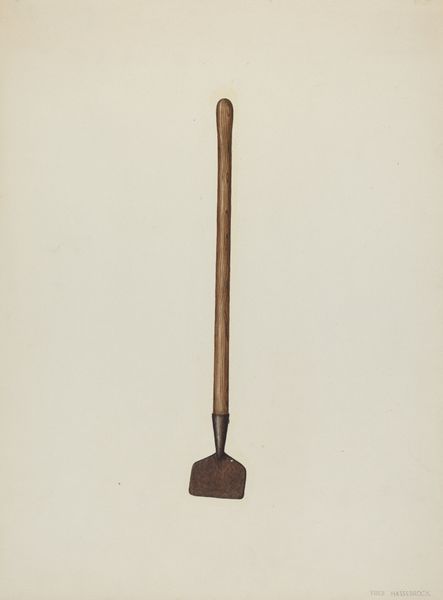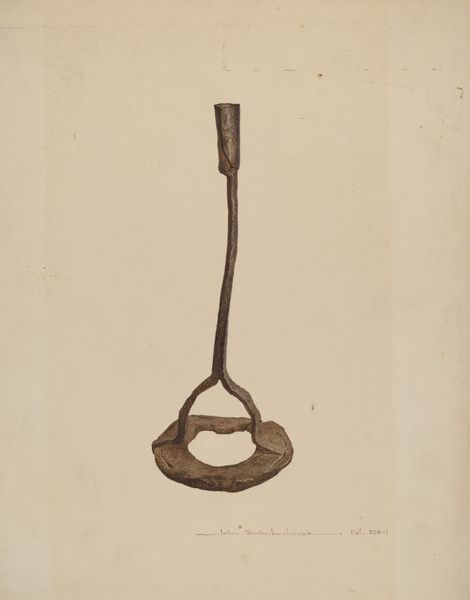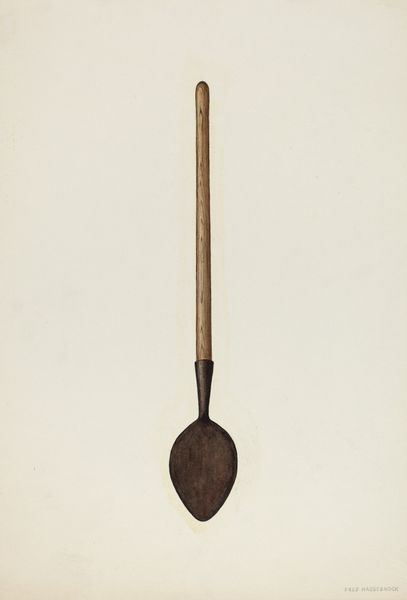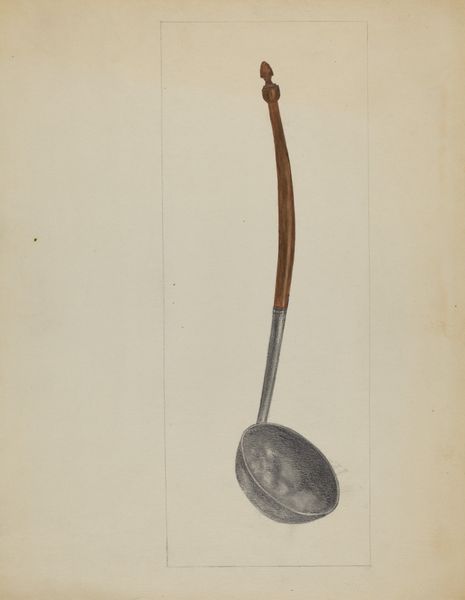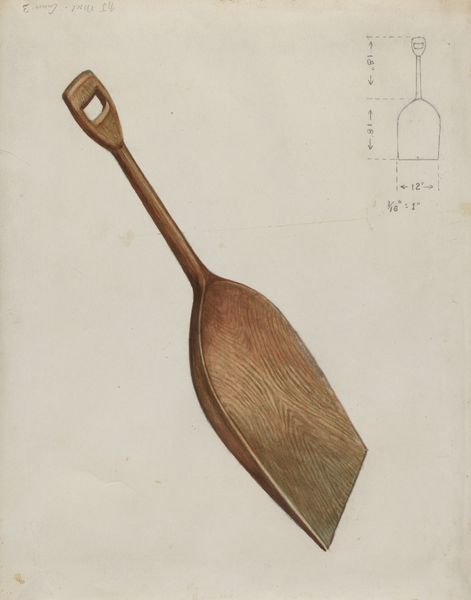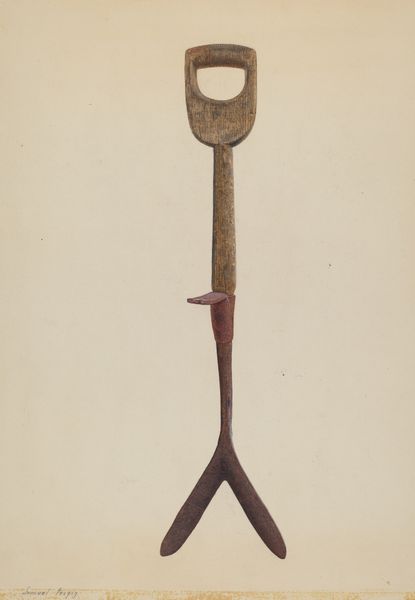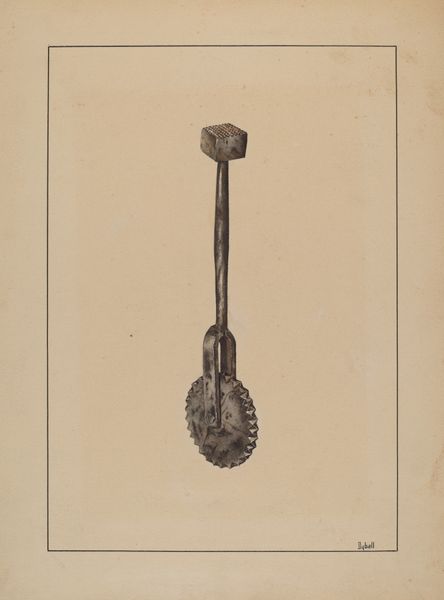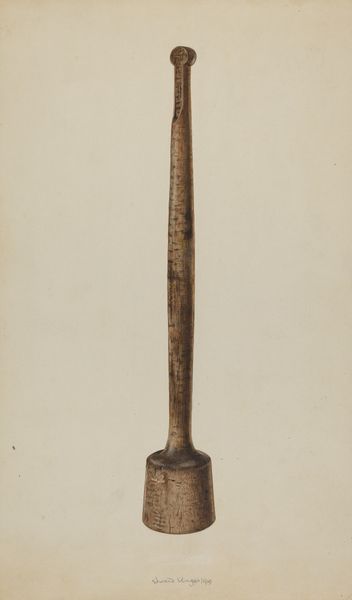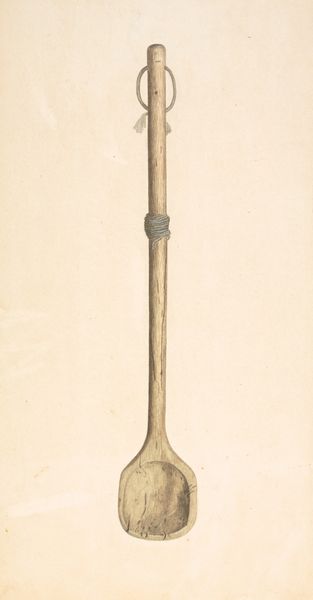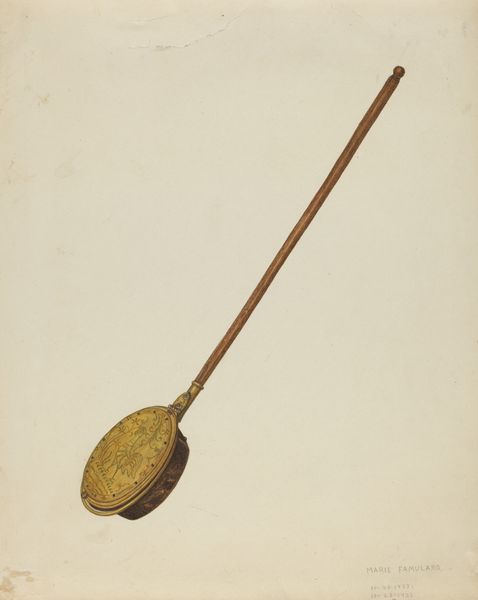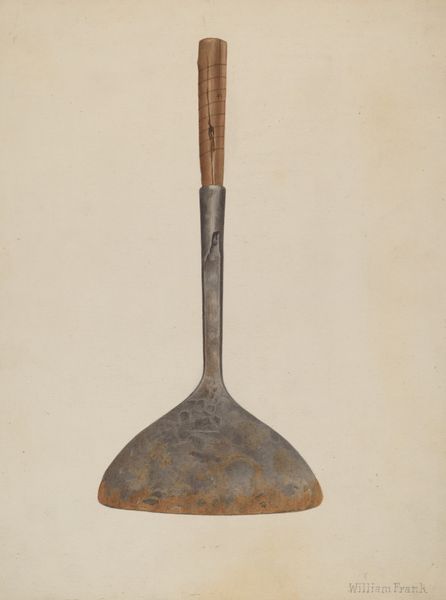
drawing, watercolor, pencil
#
drawing
#
watercolor
#
pencil
#
watercolor
Dimensions: overall: 30.7 x 22.9 cm (12 1/16 x 9 in.)
Copyright: National Gallery of Art: CC0 1.0
Curator: At first glance, this pencil and watercolor drawing of what the artist, Samuel Fineman, titles "Combination Rush & Candle Stand," seems incredibly unassuming. Editor: Understated elegance. That's the impression I get. It's delicate, the colors are muted, almost as if light itself is being represented. You immediately understand that rush lights and candles held incredible domestic importance for the majority of our past. Curator: Exactly! Fineman worked with the Historic American Buildings Survey, an organization dedicated to documenting architectural heritage and, through this, reflecting social practices. It’s really important to remember that architectural drawings weren't just technical exercises but had clear social, cultural and even political aims. Editor: This almost feels more anthropological than purely artistic, doesn't it? I'm curious, were these drawings used to make historical re-creations of items that time and history might otherwise have lost? What are rush lights made from? How labor-intensive was it? Were those materials readily available to the average consumer, or just for the upper classes? It all evokes such basic elements of human survival and industry. Curator: You've hit on some really interesting points there. Certainly the detailed rendition of this candle stand’s components suggests that reproduction might have been the aim, making craft or even small-scale industrialization possible. These types of archival projects served both educational and, in some cases, economic roles. And you can imagine how a museum exhibit, centered around something seemingly banal such as this stand, helps us understand more clearly how lighting impacted lifestyles of those in early America. Editor: Seeing something so simple elevated and documented speaks volumes. I find that to be particularly poignant, particularly when you reflect upon the circumstances of its execution in 1938, in the shadow of both the Great Depression and looming war in Europe. What value did the artists who catalogued them place on humble objects? Curator: Indeed. The fact that they were invested with importance at a time of extreme upheaval does suggest they represented more than mere practical tools. Preserving these ordinary objects highlights a value placed upon traditional craft. I see these types of images as having deep patriotic purpose: reflecting local identities to foster greater social cohesion. Editor: Food for thought, indeed. Curator: Absolutely, a lot to consider for what seemed a simple drawing to start.
Comments
No comments
Be the first to comment and join the conversation on the ultimate creative platform.
